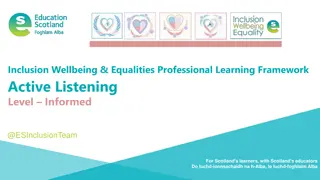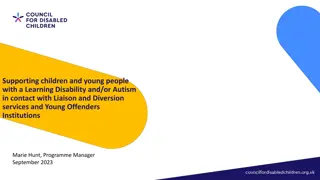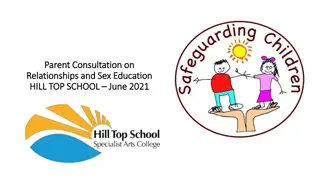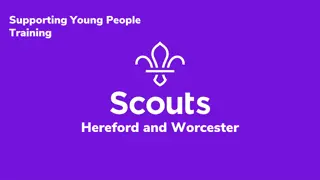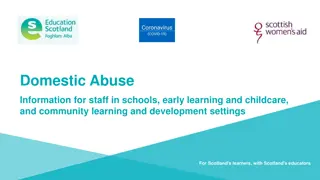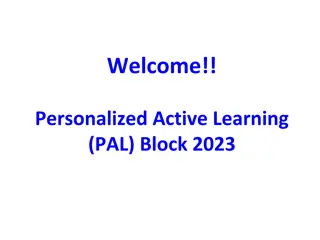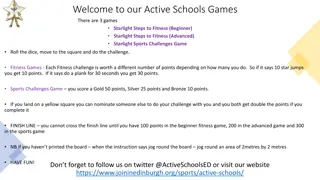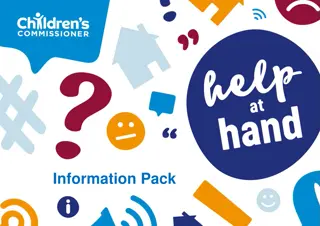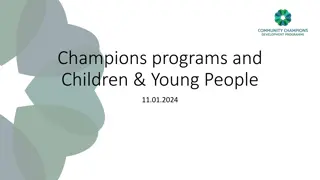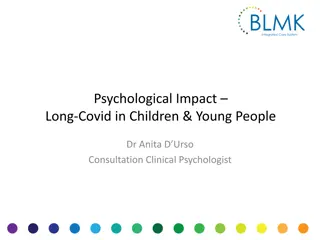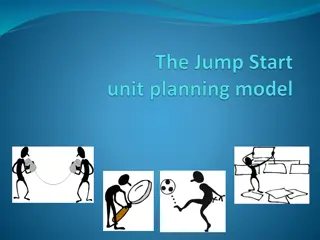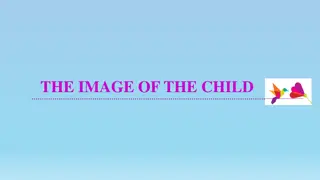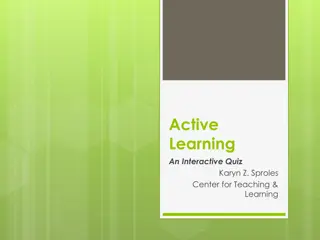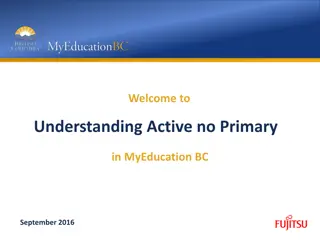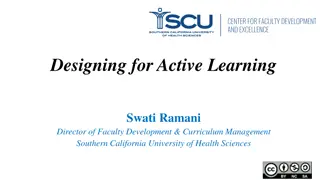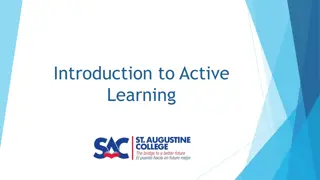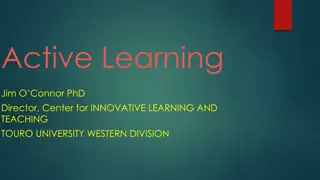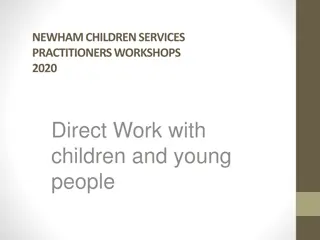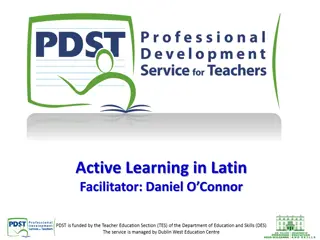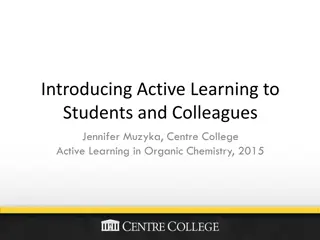Exploring Active Learning Strategies for Children and Young People
Engage in active learning methods that challenge and stimulate children and young people's thinking through real-life and imaginative scenarios. This approach incorporates spontaneous and planned learning opportunities, encouraging exploration, collaboration, and higher-order thinking skills. Discover various activities and techniques to implement active learning effectively, fostering a child-centered and enjoyable learning environment.
Download Presentation

Please find below an Image/Link to download the presentation.
The content on the website is provided AS IS for your information and personal use only. It may not be sold, licensed, or shared on other websites without obtaining consent from the author. Download presentation by click this link. If you encounter any issues during the download, it is possible that the publisher has removed the file from their server.
E N D
Presentation Transcript
Active Learning the body of the lesson Active learning is learning that engages and challenges children and young people s thinking using real-life and imaginary situations. It takes full advantage of the opportunities for learning presented by: Spontaneous learning Planned purposeful learning Investigating and exploring Events and life experiences Focused learning and teaching
What does it look like? It challenges learning It engages learners It is child centred It builds upon previous experiences It provides opportunities for fun/enjoyment The learner can plan and evaluate learning (Aifl strategies) It involves higher order thinking skills, for example, analysis, synthesis, creation, evaluation It can be collaborative and involve co-operative learning (active learning with a social and academic goal)
Graffiti a group activity In groups of 4 (if possible). Divide paper into 4 boxes. Each person writes down as many active learning activities as they can think of that they use in their own lessons. Share with each other once finished and find out which are the most popular. Have you learned any new strategies to try?
4 corners Look at the four pictures around the room. Which one would you choose to symbolise where you are in your practice with Active Learning? Stand next to the picture you would choose. Choose a partner and explain why.
Final points 1 Remember: Active learning does not have to mean moving around the room! Here are some final strategies people use: Think, Pair, Share Ordering text Using writing frames to create new work Finding out using resources, dictionary ICT etc Ball throwing games Mastermind Debate Learners leading parts of a lesson/teaching peers
Final points 2 Peer assessment Mini-white boards Adapting role plays Reading and explaining parts of a novel Making things, following experiments Creating and answering questions Co-operative learning in groups Co-operative learning whole class building Reflecting on skills used to complete and activity and evaluating the process AND MANY MORE ! Active learning aids metacognition, helping learners to understand how to learn and develop skills for life, work and life-long learning. www.youtube.com/watch?v=UsDI6hDx5uI



